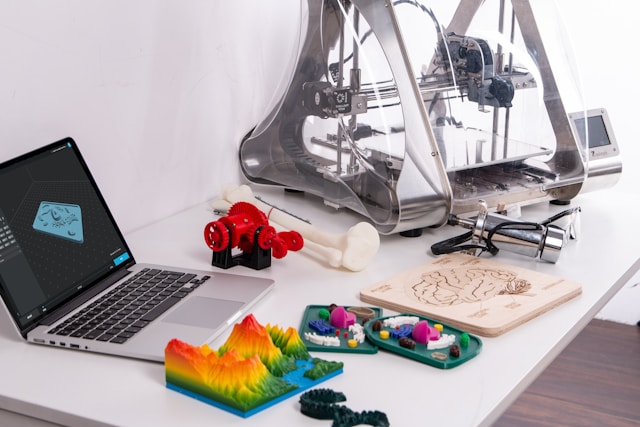
Introduction
In the rapidly evolving landscape of industrial manufacturing, 3D printing technology, championed by innovators like IndustLabs, emerges as a revolutionary force. This technology is reshaping traditional production processes and ushering in a new era of innovation and efficiency.
This article explores the profound impact of 3D printing on the manufacturing industry, particularly focusing on how it benefits engineers, industrial engineers, and professionals involved in automation.
The Evolution of 3D Printing in Industrial Applications
3D printing, also known as additive manufacturing, has transitioned from a prototyping tool to a full-fledged production technology. Industries ranging from aerospace to automotive and healthcare have adopted 3D printing for a variety of applications, finding value in its ability to create complex, customized, lightweight structures with high precision and reduced waste.
Enhancing Customization and Reducing Time to Market
One of the primary advantages of 3D printing is its ability to enhance product customization. Unlike traditional manufacturing, which often requires new molds and tools for each new part, 3D printing allows for easy alterations in the digital design with minimal additional cost. This capability is particularly beneficial for industries where customization is key, such as medical devices and automotive manufacturing.
Moreover, 3D printing significantly reduces the time from design to production. Engineers can rapidly prototype and test parts without the need for lengthy tooling processes, thereby accelerating innovation and reducing time to market. This is critical in industries like aerospace, where the rapid iteration of parts can be a game-changer in product development.
Cost Reduction and Waste Minimization
In traditional manufacturing processes, the cost of waste material can be substantial, especially with expensive materials like titanium used in aerospace and biomedical applications. 3D printing mitigates this issue by using only the amount of material necessary to build a part, layer by layer.
This not only reduces material costs but also lessens the environmental impact associated with waste.
Complexity for Free
A significant phrase often associated with 3D printing is “complexity for free.” This technology allows the creation of complex geometries that would be either impossible or prohibitively expensive to produce using conventional methods. For engineers, this opens up new possibilities in design and functionality, including the integration of advanced features without additional costs.
Integration of Smart Features and Advanced Materials
With advancements in 3D printing technologies, engineers are now able to integrate smart materials and electronics directly into printed parts. This integration is paving the way for more sophisticated products, such as parts with embedded sensors or circuits that can monitor stress, temperature, or pressure. Such innovations are crucial for sectors like industrial automation, where real-time data and feedback can significantly enhance operational efficiency.
The Role of 3D Printing in Sustainability and Supply Chain Resilience
3D printing also plays a pivotal role in enhancing the sustainability of production processes by optimizing material usage and reducing the carbon footprint associated with transportation. Localized production, enabled by 3D printers, can diminish the need for long supply chains, thereby reducing the transportation emissions and costs associated with conventional manufacturing.
Furthermore, during global disruptions like the COVID-19 pandemic, 3D printing demonstrated its value in supply chain resilience. Manufacturers were able to adapt quickly and produce essential components locally, avoiding the delays and disruptions experienced in traditional supply chains.
Conclusion
The transformation brought about by 3D printing in industrial production processes is profound. By enabling the streamlined creation of complex components like MCC Motor Control Centers, this technology enhances design freedom, cost efficiency, and sustainability. It also empowers engineers and industrial professionals to innovate at an unprecedented pace.
As 3D printing technology continues to evolve, its integration into mainstream manufacturing will likely become more pronounced, marking a significant shift in how industries approach production and design challenges. For engineers, industrial engineers, and automation experts, staying abreast of these developments is not just beneficial—it is essential for driving the future of manufacturing.





